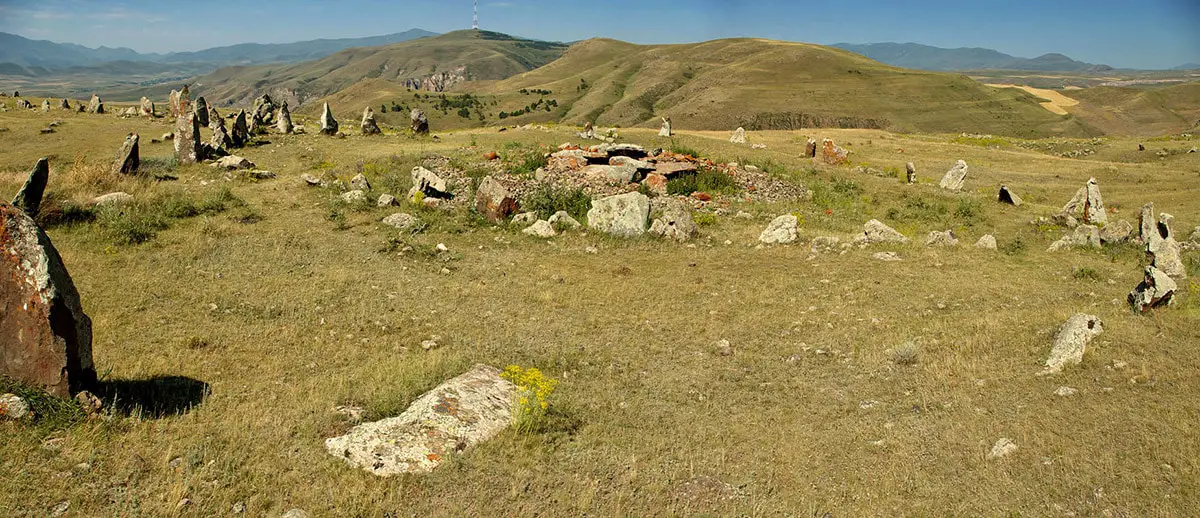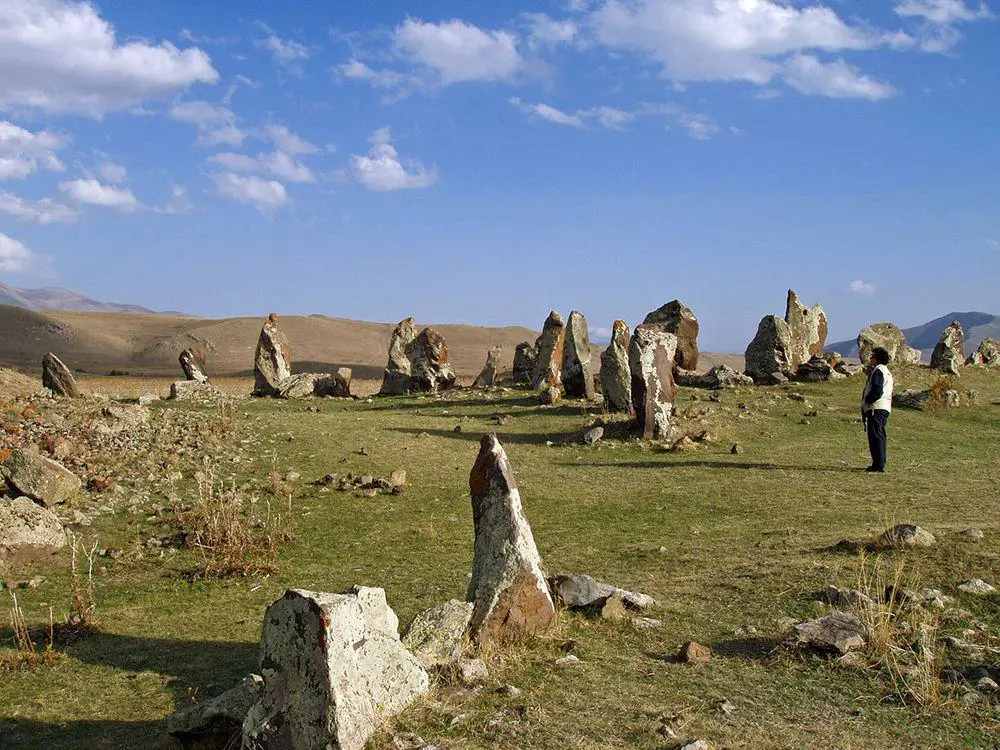Megaliths 🢔 Archaeological wonders 🢔 Categories of wonders
Wonder
Karahunj (Zorats Karer)
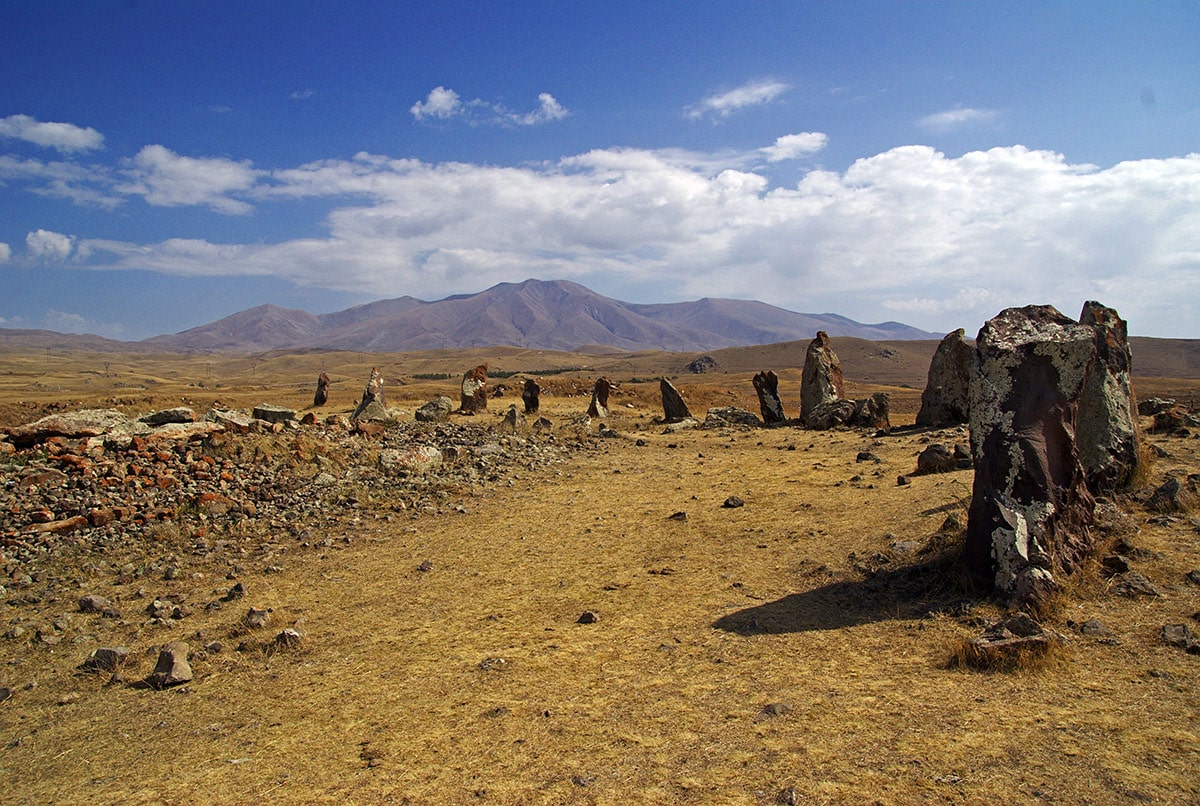
 In short
In short
One of the best known and most interesting archaeological landmarks in Armenia is Karahunj, often called Zorats Karer. Most likely this is a settlement and megalithic necropolis from the Middle Bronze Age-Iron Age. According to an alternative theory, this is the purported world’s oldest astronomical observatory, built in the 6th millennia BC.
 43.3%
43.3%
GPS coordinates
Location, address
Alternate names
Age
Culture
Map of the site
If you see this after your page is loaded completely, leafletJS files are missing.
 In detail
In detail
Location
Karahunj is located on rocky promontory at the deep canyon of Dar river, 1,770 m above the sea level.
Stones (andesite), which have been used for the construction, have local origin.
Area of Karahunj is approximately 7 ha, part of the area has been used in agriculture and some values have been lost.
This site is not entirely unique – there are similar, albeit less impressive sites, e.g. ancient Uyts – prehistoric settlement and necropolis with stone settings 5 km to the south-east from Karahunj.
Settlement and necropolis
According to German research (Institut für Vorderasiatische Archäologie, 2000), this site served for the burials in the Middle Bronze Age – Iron Age (the 3rd – 2nd millenia BC). Similar to many other cultures of this period, locals buried their deceased ones in massive stone cists, covered with enormous stone slabs. In total here have been found some 200 such shallow tombs.
Nearby was found a settlement which possibly served as a refuge in the times of war sometimes around 300 BC – 300 AD.
Monument has many diverse stone settings. Area is very rich with stone, thus it is understandable that local materials were used in construction.
"Central" stone circle
By far the most famuos part of this landmark is a ring of upright stones with especially large stone cyst in the middle.
This ring is 45 by 36 m large, flanked by 40 standing stones.
The dolmen in the centre is 7 by 5 m large, covered with giant stone plates.
It is possible that the stone circle served as a reinforcement of wall around the dolmen – possible cult site. Elongated blocks were driven vertically in the ground and space between them was filled with rocks and loam. As the time passed, the filling of walls was washed out.
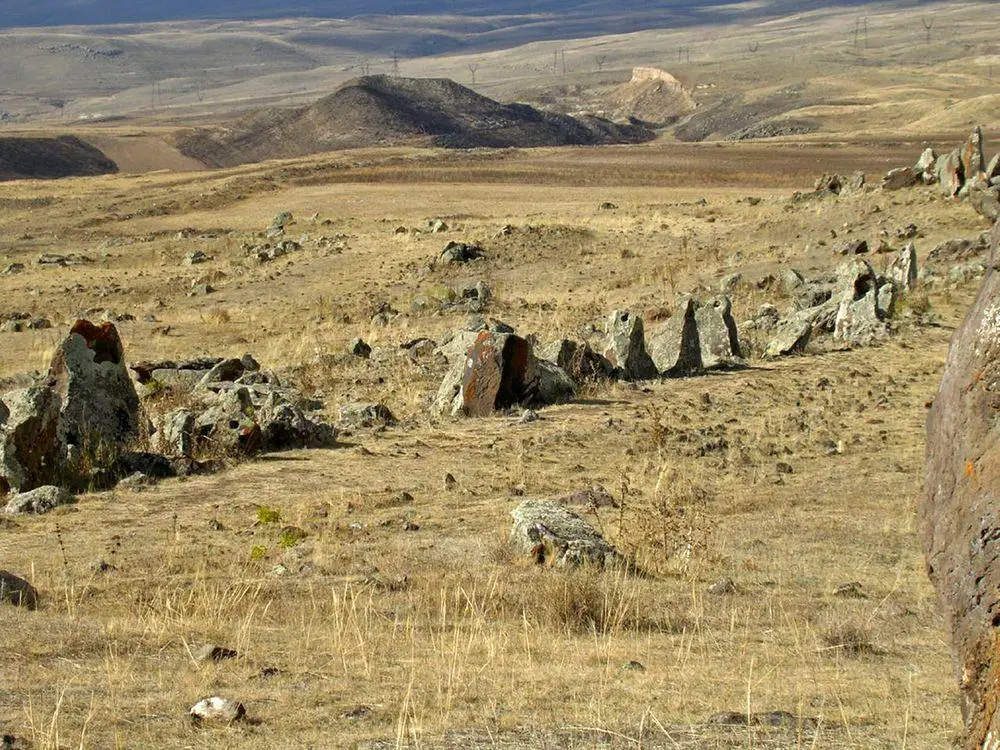
Other stone settings
There are numerous other standing stones, many are arranged in wall-like rows and many – in seemingly chaotic way. In total Karahunj has 222 upright stones. Tallest stones are up to 2.8 m tall, approximately 10 tons heavy.
Most likely in antiquity here were many more standing stones. Karahunj is endangered landmark and even one century ago it was in much better condition than now.
Holes in the stones
Unique characteristic of Karahunj is circular, smooth holes in the upper parts of many standing stones.
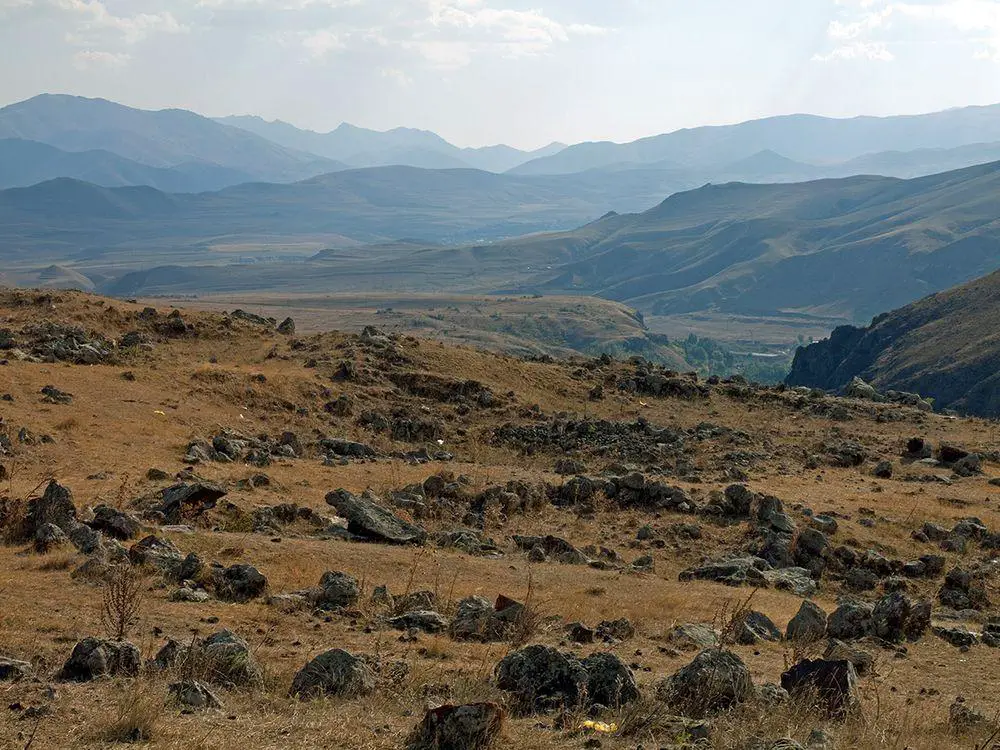
In total 84 stones are known to have these artificially made holes.
Thus – to the north from the main ring goes 136 m long wall of 80 upright stones. 49 stones have holes.
To the south extends another wall of 70 stones, it is approximately 120 m long. 26 stones in this wall have holes.
Through the central ring goes a line of 20 smaller stones, 6 stones have holes.
Three stones have two holes each.
In three cases holes enter the stone from the side and then turn in a right angle and go upwards.
Holes have a diameter of some 5 cm, maximum length of holes – 20 cm.
It is not clear whether these holes were created at the time of construction of stone ring or were created in later times.
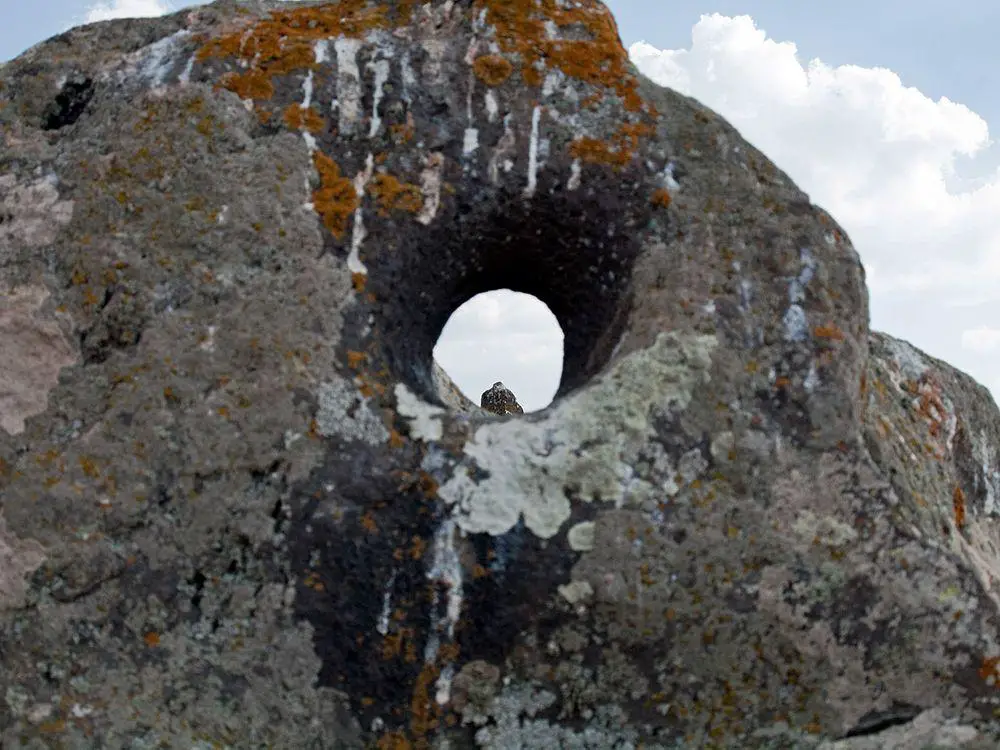
Ancient astronomical observatory?
According to local legends this stone fortress was built by kind-hearted giants for a tribe of short people.
Karahunj was well known to specialists as well and was considered to be a cult site.
In 1984 though appeared exotic theory – what if this was an prehistoric astronomical observatory, similar to Stonehenge in England?
As time passed, this theory became more and more popular. Several specialists analyzed the direction where the holes are pointing, there was analysed also the placement of standing stones, results were compared to the position of stars, sunsets, and sundowns throughout the year.
There were found three – four dispositions where the holes point directly at the sunrise and sunset in midsummer. It was noted also that some holes point towards Deneb in the constellation of Cygnus – similar to the oldest known shrine in Göbekli Tepe, where stones also point to this star.
Some specialists even calculated the age of the stone circle itself, purely based on the position of stars in the sky in earlier times – the result was 7.6 thousand years ago. This would make Karahunj the oldest astronomical observatory in the world.
Karahunj became a very popular landmark, it has been used for Neopaganic rituals, similar to Stonehenge.
Some heretic questions:
- If there are 84 stones with circular holes, there are 168 directions to look through these holes. Most of these directions point to somewhere in the sky. Is it that surprising that in some cases holes point to midsummer sunrise?
- Why just one hole (and not several visors as in the case of Gavi Gangadhareshwara) is used for orientation? Holes are 5 cm in diameter and stones are a maximum of 20 cm thick – thus the holes do not point precisely to one point in the sky, one can move behind the hole and see different parts of the sky. Observations become precise only if one is located rather far behind the stone – but then… maybe holes were made for some other, practical reasons and we are just trying to see what we want to see?
- Why such landmarks are repeatedly compared to Stonehenge in England? Prehistoric stone circles are found in many places around the world – e.g. in Brazil, Australia, Egypt, and elsewhere, sometimes these landmarks are older than Stonehenge.
- Is it correct to assume that this monument is an ancient observatory and then, based ONLY on this assumption, to calculate the age of this landmark after the positions of stars in ancient times?
- Why there is that much attention on one part of this landmark? The monument is much larger, there are some other stone enclosures as well (see yourselves in Google Earth)?
In spite of any doubts Karahunj is an enigmatic and very interesting landmark. Like in the case of many megaliths around the world, it is not entirely clear why ancient people built these structures. When it was built? Why and when were made holes in the stones?
References
- Survey in Süd-Armenien im Jahre 2000. Accessed in the 10th March 2013.
- Frank Joseph. Armenian Stonehenge Confounds Scholars. Barnes Review, July/August 2011. Accessed in the 10th March 2013.
- Парис М. Геруни. Армяне и Древнейшая Армения. Yerevan, 2008.
 Linked articles
Linked articles
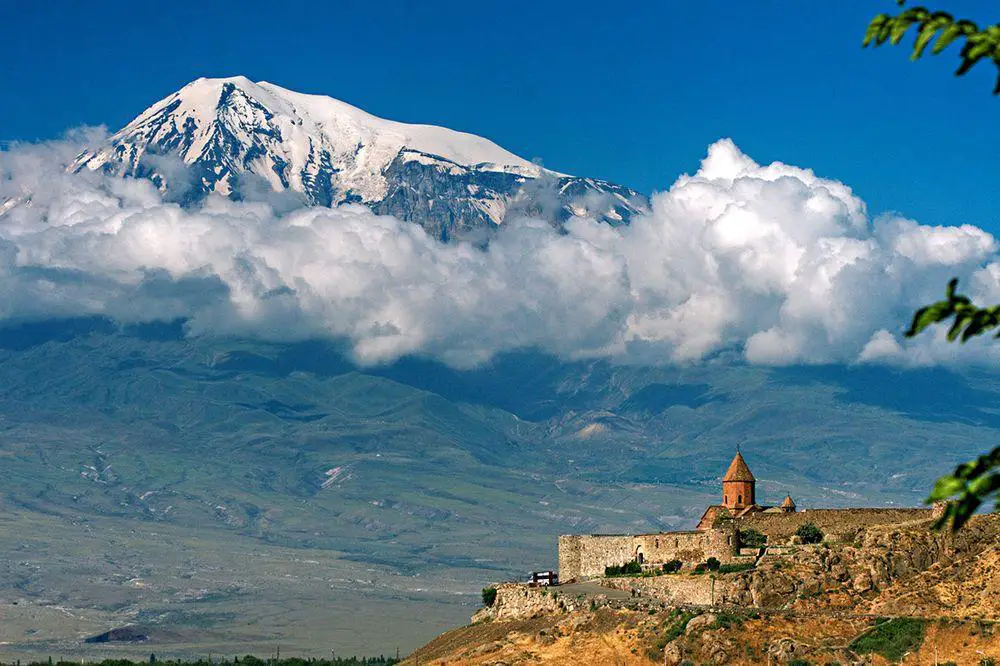
Wonders of Armenia
In spite of its small size Armenia has quite a few surprising landmarks. Highlights of this country are some of the oldest churches and Christian monasteries in the world and interesting archaeological heritage, such as cyclopean fortresses, megaliths, and cliff carvings.
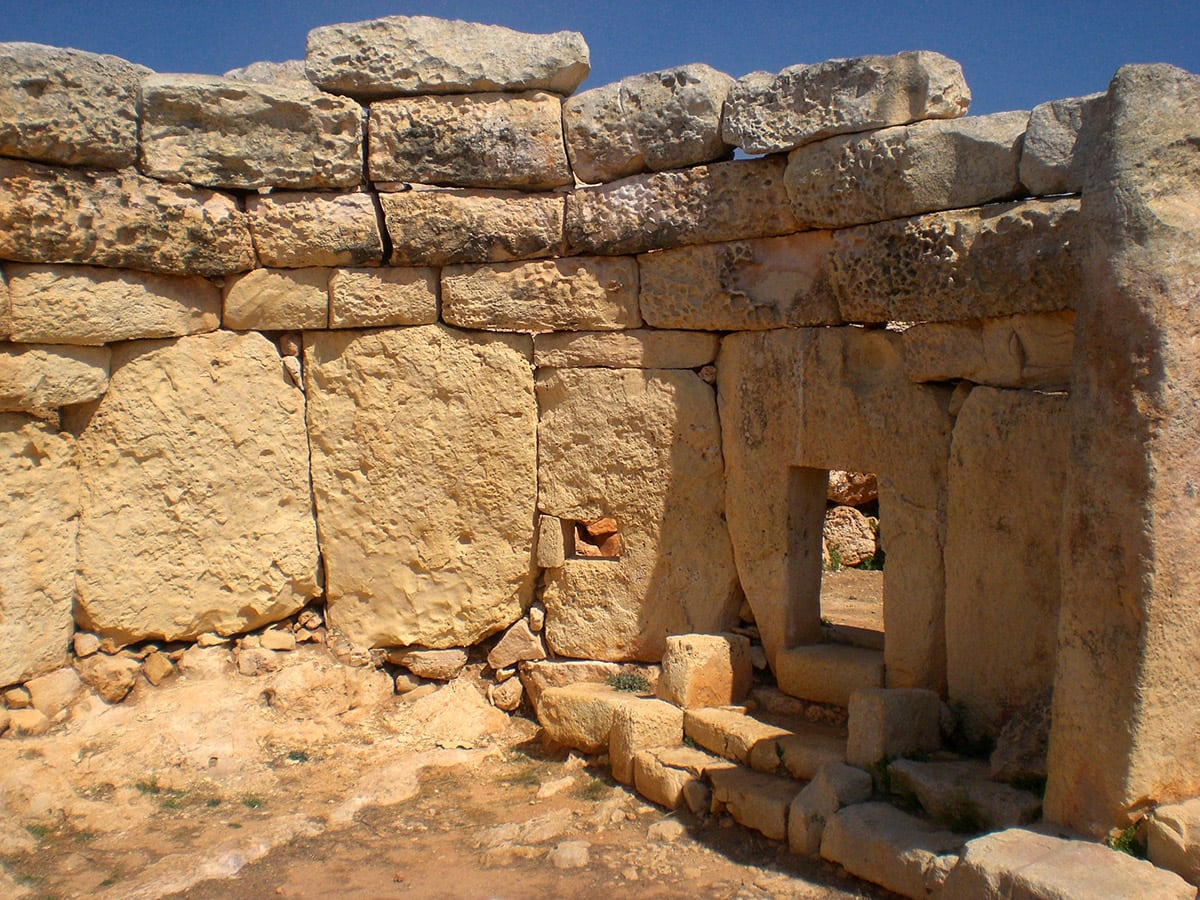
Megaliths
One of the most fascinating groups of archaeological monuments are prehistoric structures made of stones – megaliths. Through the ages, people have loved to strain their minds to find a sensible explanation for the many riddles posed by megaliths.
Even today, we can admit with some pleasure, there are thousands of mysteries left for us.

Wonders of Asia
Any other continent (and part of the world) seems small if compared to Asia. This refers also to natural and man-made heritage: in Asia are not just thousands of great landmarks, there are found landmarks created by thousands of diverse cultures from ancient Phoenicians to the mysterious small people in the Philippines and eastern islands of Indonesia.
 Recommended books
Recommended books
Armenia: Imprints of a Civilization
Published on the occasion of the celebrations of the fifth centenary of the publication of the first book printed in Armenian characters in Venice in 1512, this volume celebrates the highest achievements of Armenian civilization in the spiritual, artistic, architectural, economic, and thought.
The Armenians: Art, Culture and Religion
This volume takes as its starting point the internationally important collection of Armenian illuminated manuscripts in the collection of the Chester Beatty Library, Dublin. The authors have selected over 20 of the rarest and most beautiful manuscripts to tell the history of the Armenian people, their art, and their literature.

